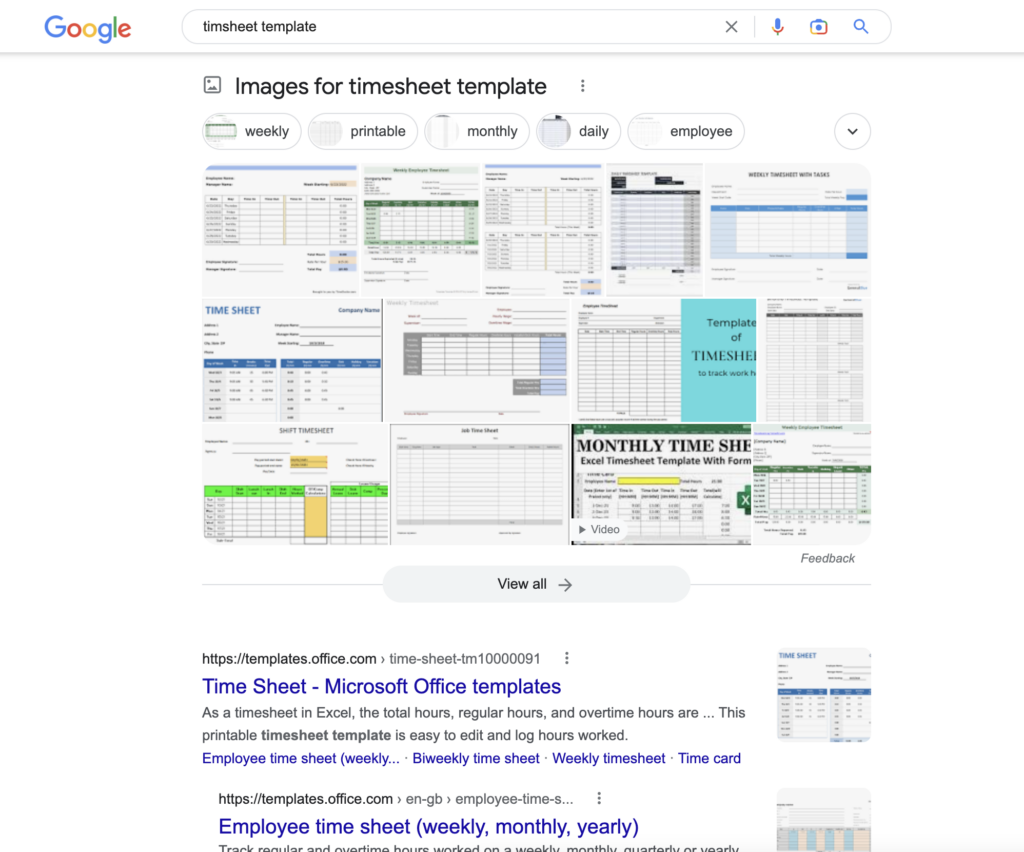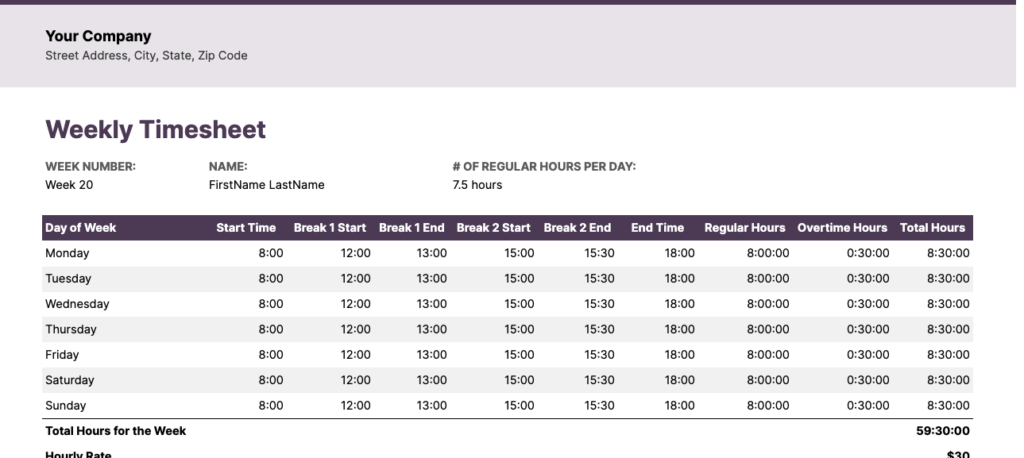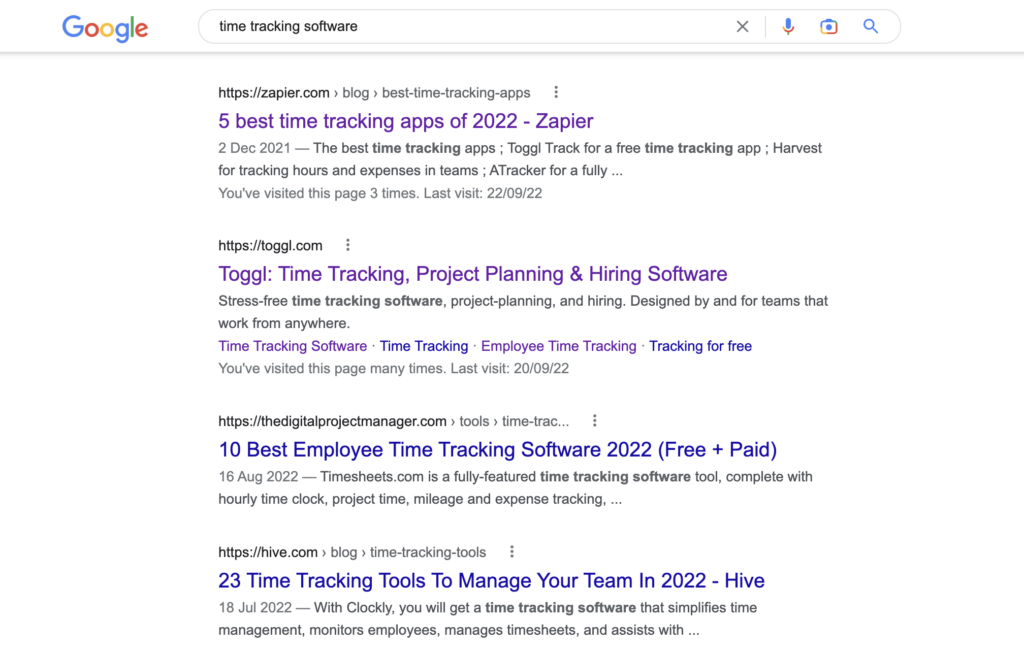Tracking time is essential for a lot of businesses. It’s needed for client billing, payroll, tracking employee hours, or even complying with EU regulations.
Spreadsheets have long been touted as the go-to method for teams and businesses to track their time.
But are spreadsheets the best way to track your time?
In this post, you’ll learn how to track time in a spreadsheet, get instant access to several templates, and discover a better way to track your time.
Let’s jump in!
How to track time in a spreadsheet
Tracking time in a spreadsheet isn’t overly complicated. Tools like Microsoft Excel and Google Sheets are widely used to track employee hours.
Typically, employees will add their work hours each day and submit the timesheet for approval at the end of the week. Their total working hours will be calculated automatically if the spreadsheet is set up with the correct formulas.
Search for ‘timesheet templates’ on Google, and you’ll come across a bunch of free timesheet templates you can use.

How do they work?
Spreadsheets for time tracking should typically contain cells for the following:
- Day of the week
- Start and end times
- Breaks
- Total hours
- Overtime and billable hours
- Total hours for the week
- Hourly and overtime rate
Depending on what you want to see in your timesheets, you can open an Excel spreadsheet or Google Sheets and add the data listed above onto the spreadsheet.
You can see an example of our weekly timesheet spreadsheet below.

Note: This spreadsheet has been set up to calculate the weekly billable hours based on the hours entered. The total working and overtime hours will be calculated automatically – based on the hourly and overtime rates entered.
We don’t want to bore you with a step-by-step guide on how to track time in a spreadsheet. So jump to the section below to access free spreadsheet templates you can use today.
Daily time tracking spreadsheet
Download: Excel or Google Sheets

Weekly time tracking spreadsheet
Download: Excel or Google Sheets

Biweekly time tracking spreadsheet
Download: Excel or Google Sheets

Monthly time tracking spreadsheet
Download: Excel or Google Sheets

Issues with spreadsheet time tracking
Are spreadsheets practical for teams?
Don’t get me wrong – I think our timesheet templates are solid.
But I’ve chatted with a few businesses that use spreadsheets to track time – and they always say how chaotic they are.
- Files get copied.
- Some go “missing.”
- Formulas are unintentionally edited.
- People don’t tend to fill them in all that much.
- You’re unable to quickly get insights you can leverage (more on this later).
You also have to remember that employees tend to hate time tracking in general. So using a spreadsheet to track their time may not be the best approach.
Time tracking software – the best alternative
Time tracking software is the best for keeping track of hours worked – especially for teams that work on client projects and tasks all day.
Unlike spreadsheets, many of the best time tracking apps come with features that help to automate and streamline the entire time tracking process.
Again, Google is your best friend here. Search for ‘time tracking software’ and you’ll find plenty of suitors.

Time tracking software will allow your employees to track their hours in various ways.
For example, if you’re using a tool like Toggl Track, you will have access to a web, desktop, and two mobile apps. Employees can quickly start tracking their time by entering a time entry description and hitting the timer button.
It takes a few seconds to switch the timer to a different task (especially if projects and tasks are already set up).
- Type in your “time entry description”
- Find your client
- Select what “project” you’re working on
- Start the timer
Easy!
Let’s look at the core features of Toggl Track that can help your employees track their hours worked.
Remember how I mentioned that spreadsheets couldn’t quickly provide data insights you can leverage?
Most time tracking tools should allow you to quickly dig deeper into data you can leverage to improve business processes or increase project profits.
If you’re using Toggl Track, you will have access to our Insights Dashboard.
It will give instant access to data such as employee and project profitability, total project earnings, labor cost, etc.

Still not sure about what to pick? We’ve also tested other timesheet apps and compiled a list of the 13 Best Timesheet Apps for every business to help you out!
Check out our knowledge base articles below to learn more.
- Project dashboard to monitor performance
- Insights to assess project profitably
- Billable rates per project and team member
- Fixed fee projects to track costs against a set fee
- Recurring projects for retainers and ongoing work
Sean is a Content Marketer at Toggl. He's been involved in SEO and Content Marketing since 2017. Before working for Toggl, Sean ran SEO at a digital marketing agency—so he's all too familiar with time tracking and project management.

